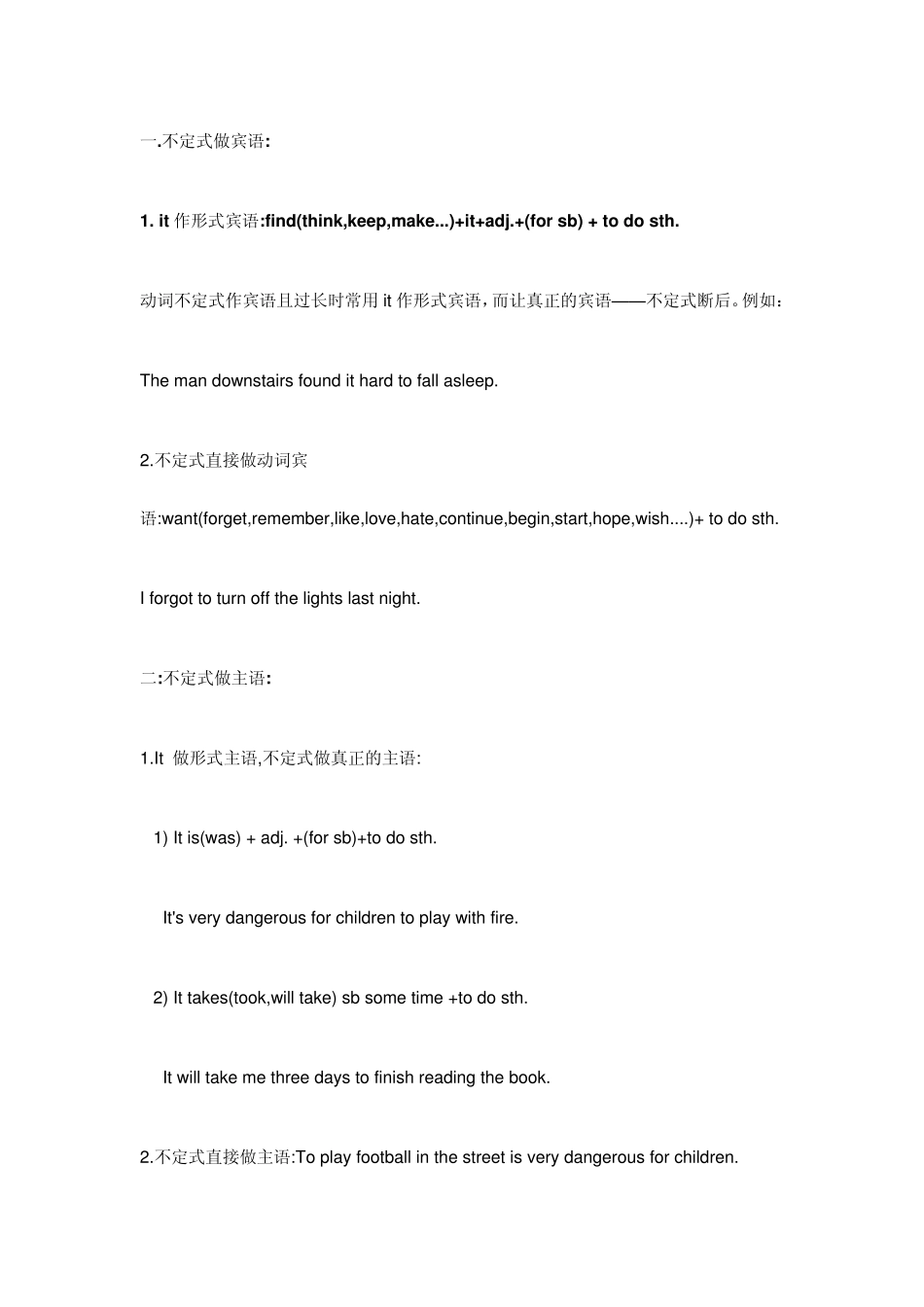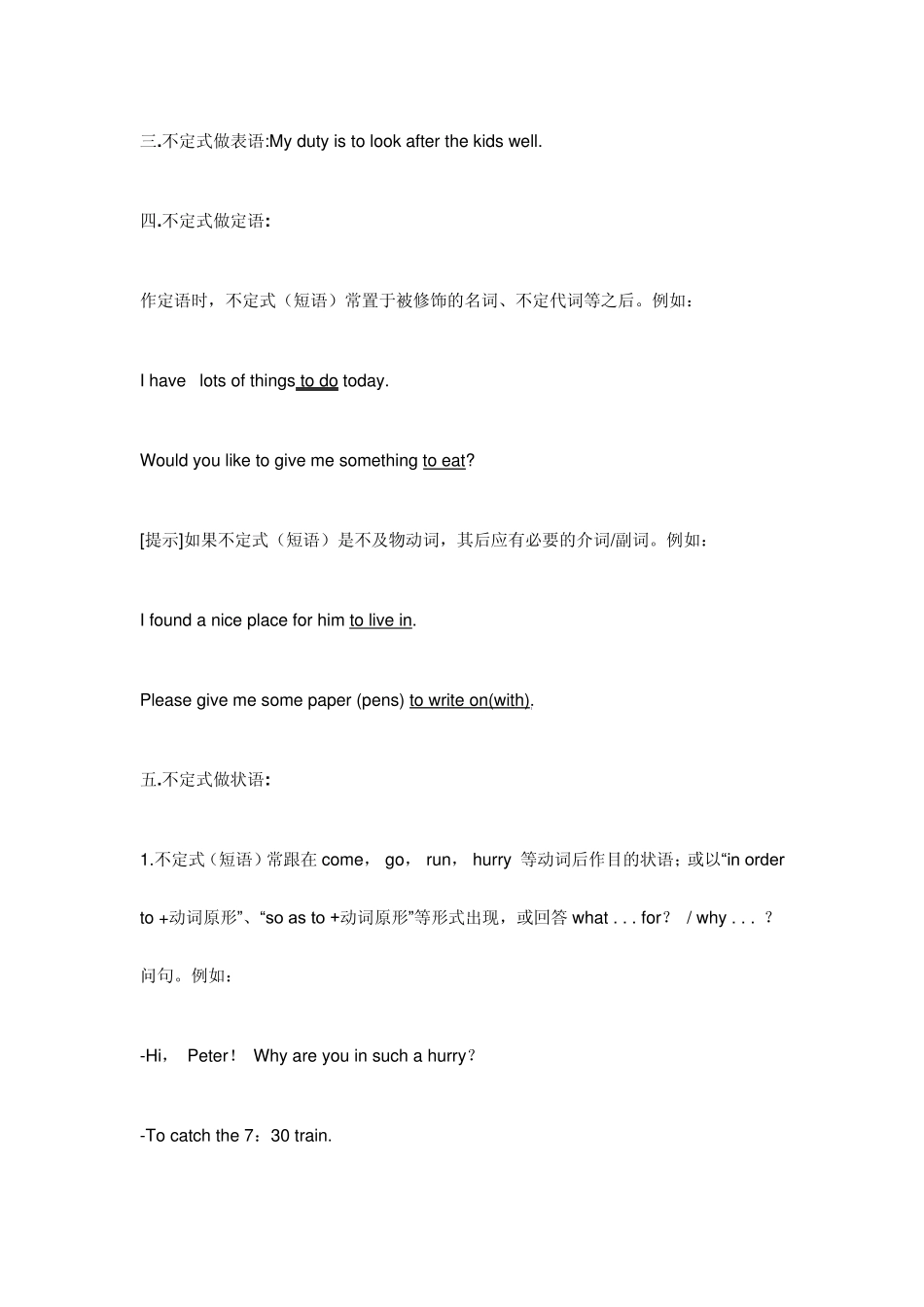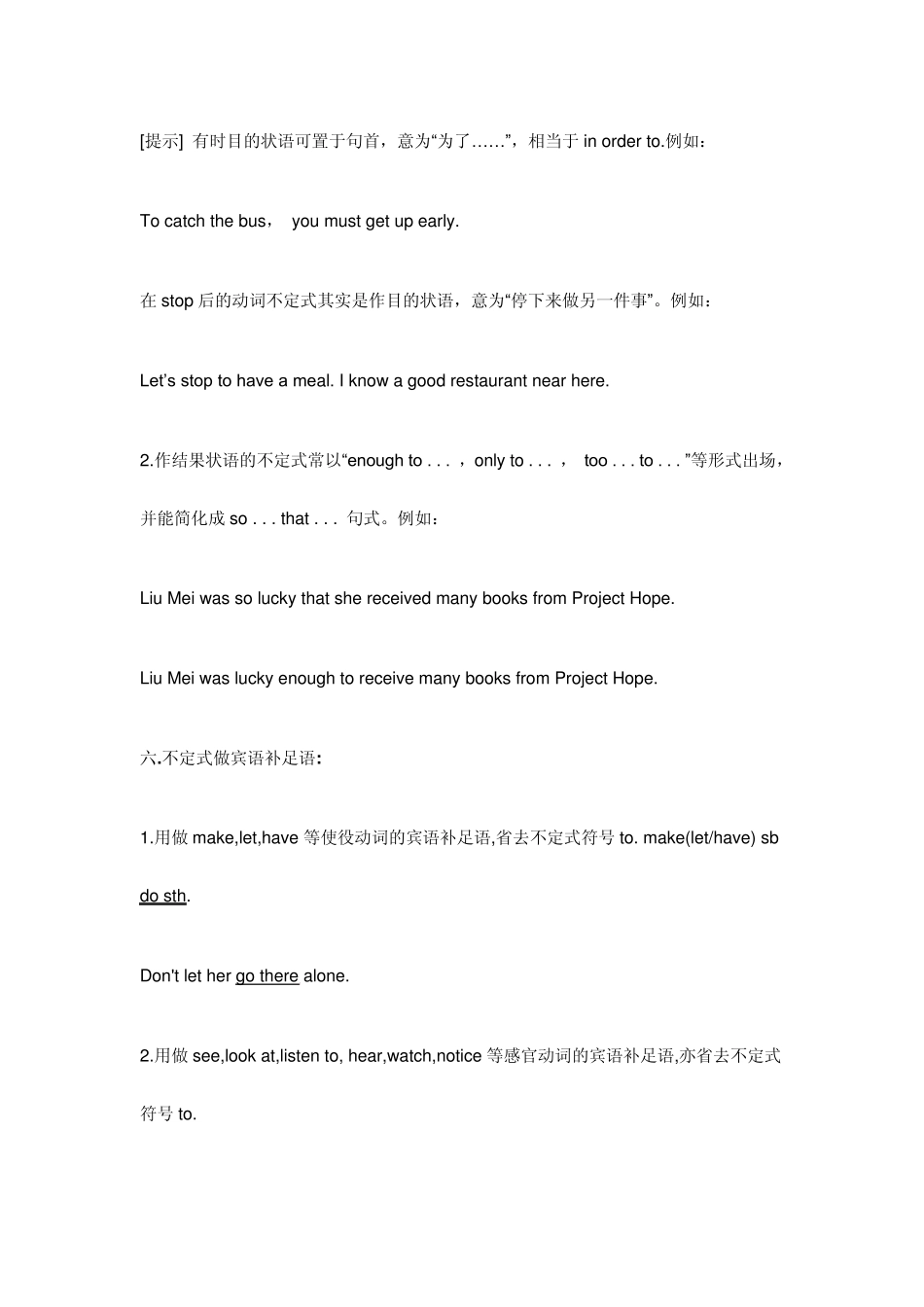一.不定式做宾语: 1. it作形式宾语:find(think,keep,make...)+it+adj.+(for sb) + to do sth. 动词不定式作宾语且过长时常用it 作形式宾语,而让真正的宾语——不定式断后。例如: The man downstairs found it hard to fall asleep. 2.不定式直接做动词宾语:want(forget,remember,like,love,hate,continue,begin,start,hope,wish....)+ to do sth. I forgot to turn off the lights last night. 二:不定式做主语: 1.It 做形式主语,不定式做真正的主语: 1) It is(was) + adj. +(for sb)+to do sth. It's very dangerous for children to play with fire. 2) It takes(took,will take) sb some time +to do sth. It will take me three days to finish reading the book. 2.不定式直接做主语:To play football in the street is very dangerous for children. 三.不定式做表语:My duty is to look after the kids well. 四.不定式做定语: 作定语时,不定式(短语)常置于被修饰的名词、不定代词等之后。例如: I have lots of things to do today. Would you like to give me something to eat? [提示]如果不定式(短语)是不及物动词,其后应有必要的介词/副词。例如: I found a nice place for him to live in. Please give me some paper (pens) to write on(with). 五.不定式做状语: 1.不定式(短语)常跟在 come, go, run, hurry 等动词后作目的状语;或以“in order to +动词原形”、“so as to +动词原形”等形式出现,或回答 what . . . for? / why . . . ?问句。例如: -Hi, Peter! Why are you in such a hurry? -To catch the 7:30 train. [提示] 有时目的状语可置于句首,意为“为了……”,相当于in order to.例如: To catch the bus, you must get up early. 在stop 后的动词不定式其实是作目的状语,意为“停下来做另一件事”。例如: Let’s stop to have a meal. I know a good restaurant near here. 2.作结果状语的不定式常以“enough to . . . ,only to . . . , too . . . to . . . ”等形式出场,并能简化成 so . . . that . . . 句式。例如: Liu Mei was so lu...


